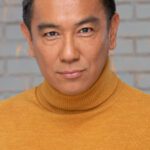In a centuries-old temple in Kyoto, American artist Taiji Terasaki installed his latest work, Wings Over Crystalline Landscapes. In his artist’s statement, Terasaki describes the exhibition as exploring “the quiet, luminous intersections between butterfly migration, mineral formation, and human contemplation. Installed at Ryosokuin Temple—a site steeped in Zen practice—this body of work invites viewers into a layered meditation on time, impermanence, and interconnectedness through painting, sculpture and augmented reality.”
The exhibition is intimate and grand at the same time. Most of the pieces are no bigger than 12X12 inches, yet the themes they touch on feel vast. Crystals—the main medium of the pieces— usually take millions of years to form. Terasaki and his team, however, managed to grow them in a single day. They began experimenting with chemical processes in March 2025 and launched the fully realized show by late summer. The speed of development is remarkable, but, as in Zen practice, when the causes and conditions align, anything is possible.
The idea for the project began when Toryo Ito, vice abbot of Ryosokuin, visited Terasaki in Honolulu. He invited Terasaki to create a site-specific piece for the temple and spoke about the declining population of chestnut tiger butterflies, whose numbers are dropping due to numerous factors such as climate change and habitat disruption.
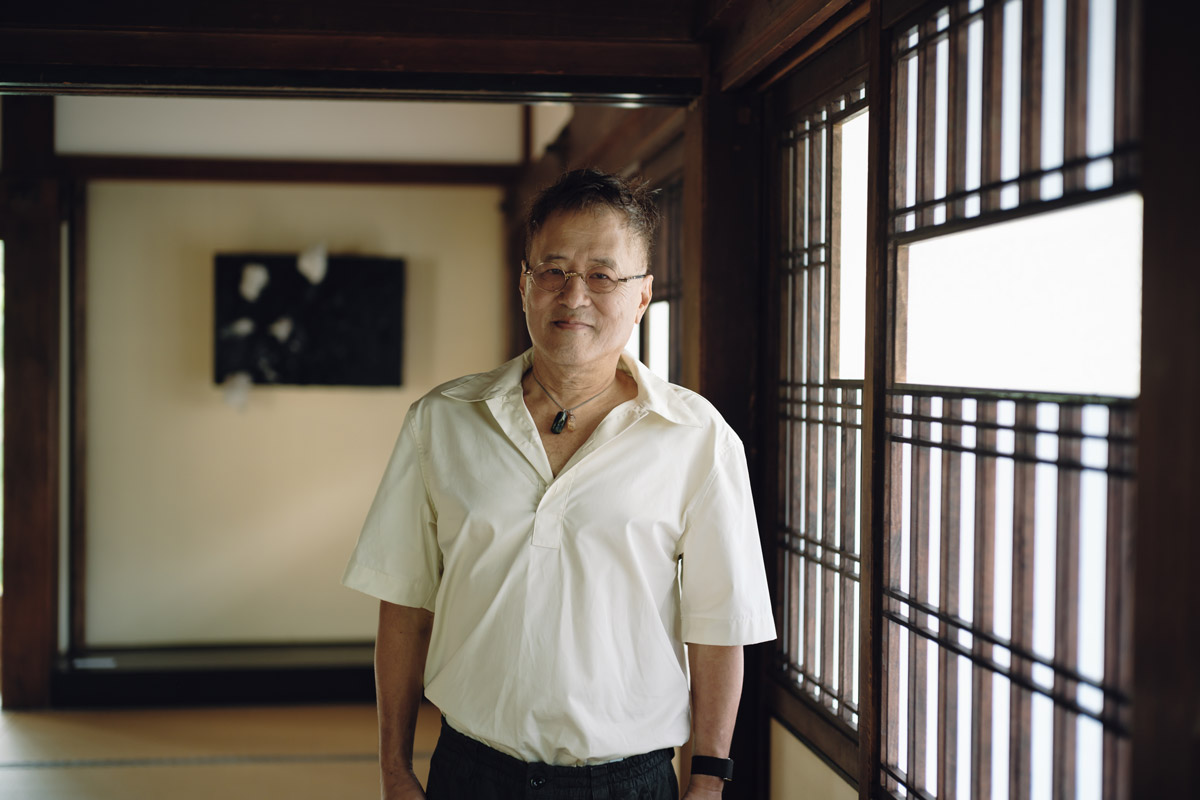
At the time, Terasaki was curious about working with crystals as a source of paint. Crushed crystals have been used in this way for thousands of years, including the brilliant blues of ancient Egyptian tombs having been made from lapis lazuli. Terasaki had also visited Sedona, Arizona, a place known for its fascination, even celebration, of crystals as a spiritual tool.
A pivotal moment came during a Zoom call with Toryo Ito. On screen, the vice abbot wore a mala, or prayer beads, made of crystals. Though he did not ascribe spiritual meaning to the mala’s material, the image sparked Terasaki’s imagination for the exhibition.
If crystals didn’t necessarily impress the vice abbot, the process of making them did. Creating the crystals required absolute stillness and silence—any vibration or sound would disrupt their fragile formation. Vice abbot Ito likened this process to Buddhist practice: “Minerals slowly regain their order in environments that maintain stillness and stability. Even slight vibrations or fluctuations in temperature can unravel their fragile and intricate bonds. Zen meditation is much the same. Distracted thoughts gradually settle through the stability of breath and awareness, until the mind eventually takes on a form of harmony. In silence, both crystals and the mind return to an unseen order.”
The Terasaki Legacy
Taiji Terasaki is a third-generation Japanese American. “My grandparents and my parents were incarcerated in camps,” he says. “They were part of that generation, but they did good for themselves.”
Taiji Terasaki’s father was Dr. Paul Terasaki. As a child, Paul Terasaki shared one room with five other family members while incarcerated at Gila River Internment Camp in Arizona. In the 1950s, Paul Terasaki went on to become a pioneer in organ transplantation. Today, Los Angeles is home to two institutions bearing the Terasaki name: the Terasaki Institute for Biomedical Innovation and the Terasaki Budokan, a recreational center in Little Tokyo.
While the Terasaki family is filled with scientists, Taiji Terasaki found his path through art. Even though he doesn’t consider himself a scientist, he does enjoy research. And his work reflects a STEAM sensibility—integrating science, technology, engineering, art, and math (as opposed to the more commonly lauded field of STEM). Even when discussing his process, he slips into a bit of scientific lingo: “I like that the crystals are inorganic material, and the butterfly is organic,” he says. “And [crystals are] below the earth’s crust, and the butterfly is flying above.”
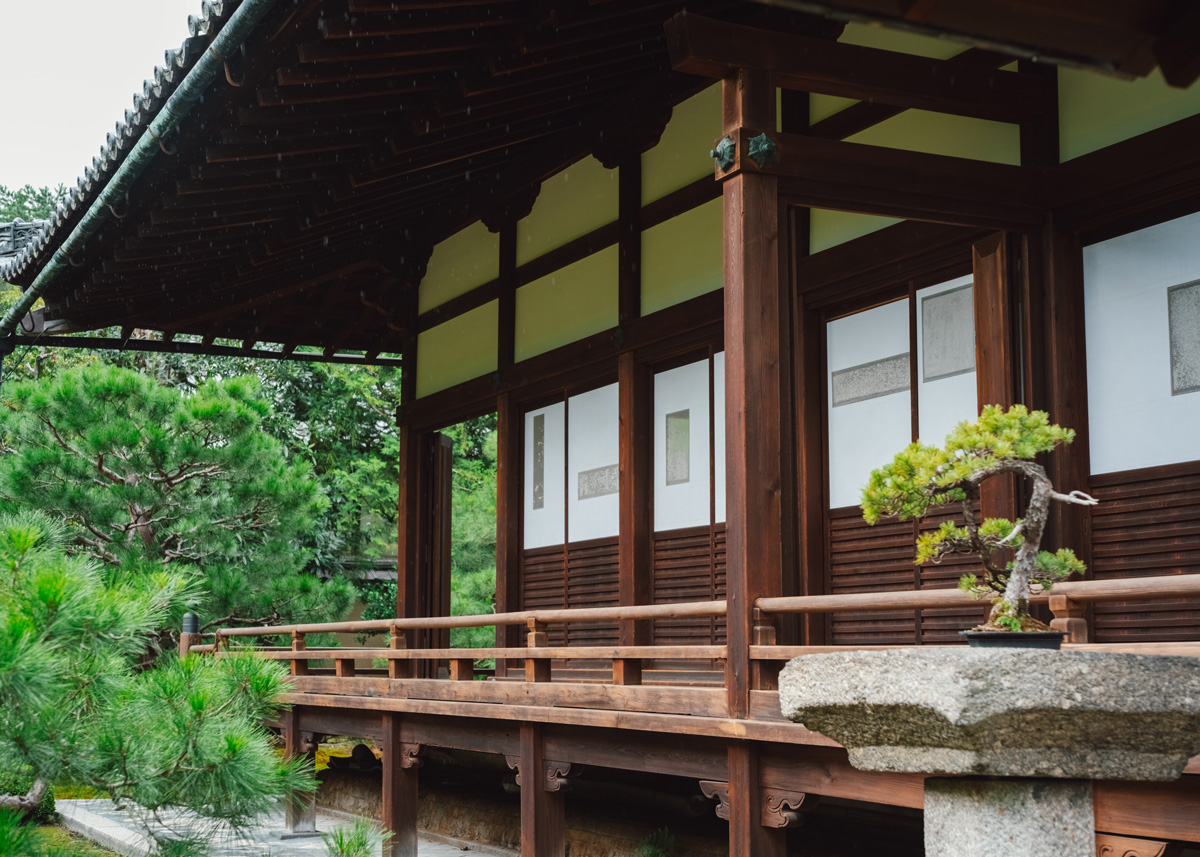
His art uses the sciences, particularly the environmental sciences and technology, to explore themes of the show. Part of the fascination of the exhibition is the use of “augmented reality” to make the exhibition come alive. While patrons can enjoy the exhibition on its own, they have the option of using mini iPads; when held up to the art pieces, the iPads illustrate butterflies fluttering across the Asian landscape. During the opening of the show, a trio of Gen-Z patrons—a group raised on screens and immersive technology—were delighted to see the small butterflies fly across the crystalline canvases. The augmented reality elevates the traditional gallery experience.
The Plight of the Butterfly
Across cultures, butterflies have long symbolized transformation. Chestnut tiger butterflies make their trek throughout Asia, from Japan to Taiwan, China, and eventually Vietnam. Sadly, like so many other butterfly populations, their numbers are in decline. In the United States, butterfly numbers have dropped by 22 percent.
Beyond their beauty, butterflies play vital ecological roles. They are pollinators and a food source for other animals, from birds to monkeys. The chestnut tiger, in particular, pollinates the fujibakama flower, a culturally significant plant in Japan that appears in classical art and literature, including Lady Murasaki’s The Tale of Genji, often cited as the world’s first novel.
In his research, Taiji Terasaki investigated the migratory path of the chestnut tiger butterflies. They fly over lands rich with quartz crystals and a variation of other stones. These stones are mined and used in a variety of ways, from improving the aesthetic quality of jewelry, to being used as spiritual healing tools, to improving technology. (Ever wonder why a Quartz watch is so precise? A tiny quartz crystal helps power the watch.)
It’s unclear whether the mining of these stones adds to the habitat destruction affecting the population of chestnut tiger butterflies, but the exhibition raises this important question.
Practice & Symbolism
Taiji Terasaki’s personal spiritual path began in a Methodist church in West Los Angeles. “But when I graduated, I became part of the sangha in downtown LA at the Zen Buddhist center there,” says Terasaki. “I took it pretty seriously for a while.”
His Buddhist practice isn’t what it once was, but it has continued to inform his world view. These days, he also incorporates Ayurvedic practices, focusing on diet, yoga, and meditation—and continues to learn about crystals and the possibilities they may hold.
In certain Buddhist communities, crystals and other rocks hold meaning. Malas can be made from an array of crystals, from clear quartz to tiger’s-eye. A Tibetan prayer wheel can have inlaid turquoise or coral. There are whole Buddhist statues made from jade. Buddhist texts refer metaphorically to the “triple gem” (Buddha, dharma, and sangha) and of course, there’s the Diamond Sutra.
While rock references are present in Buddhism, some Buddhist communities see the use of crystals—often popularized by Western New Age spirituality—as antithetical to the Buddha’s teachings. Vice abbot Ito is clear on the matter: jewels and gems in Buddhist texts serve as metaphorical symbols for “the truth Buddha found that is pure and genuine.”
In that spirit, Wings Over Crystalline Landscapes invites us to see the world with a new lens, to meditate on the impermanence of the earth and its creatures, of what we might lose or gain. It is a call to action—right action—to mindfully attend to the fate of butterflies, flowers, and all other living beings on the planet.
Lion’s Roar thanks Taiji Terasaki for supporting Noel Alumit’s attendance of “Wings Over Crystalline Landscapes” at Ryosokuin Temple in Kyoto, Japan.
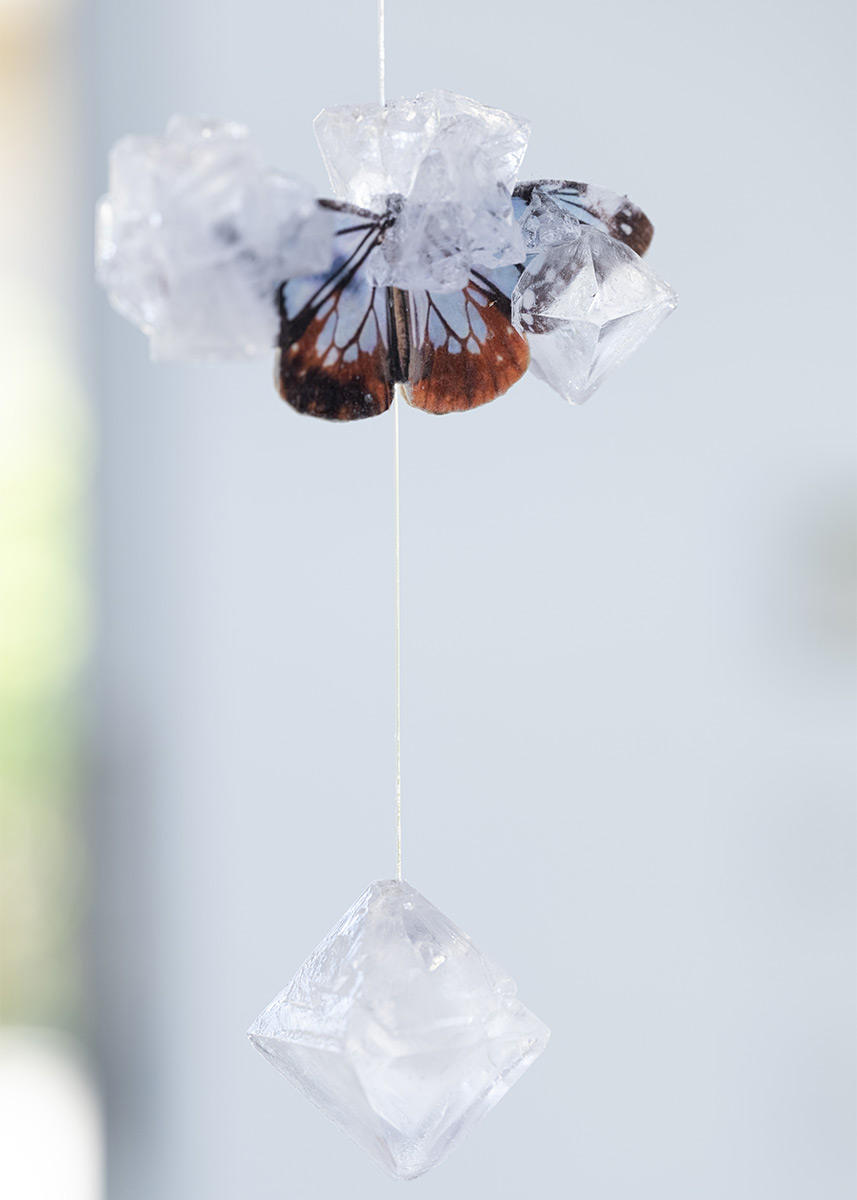
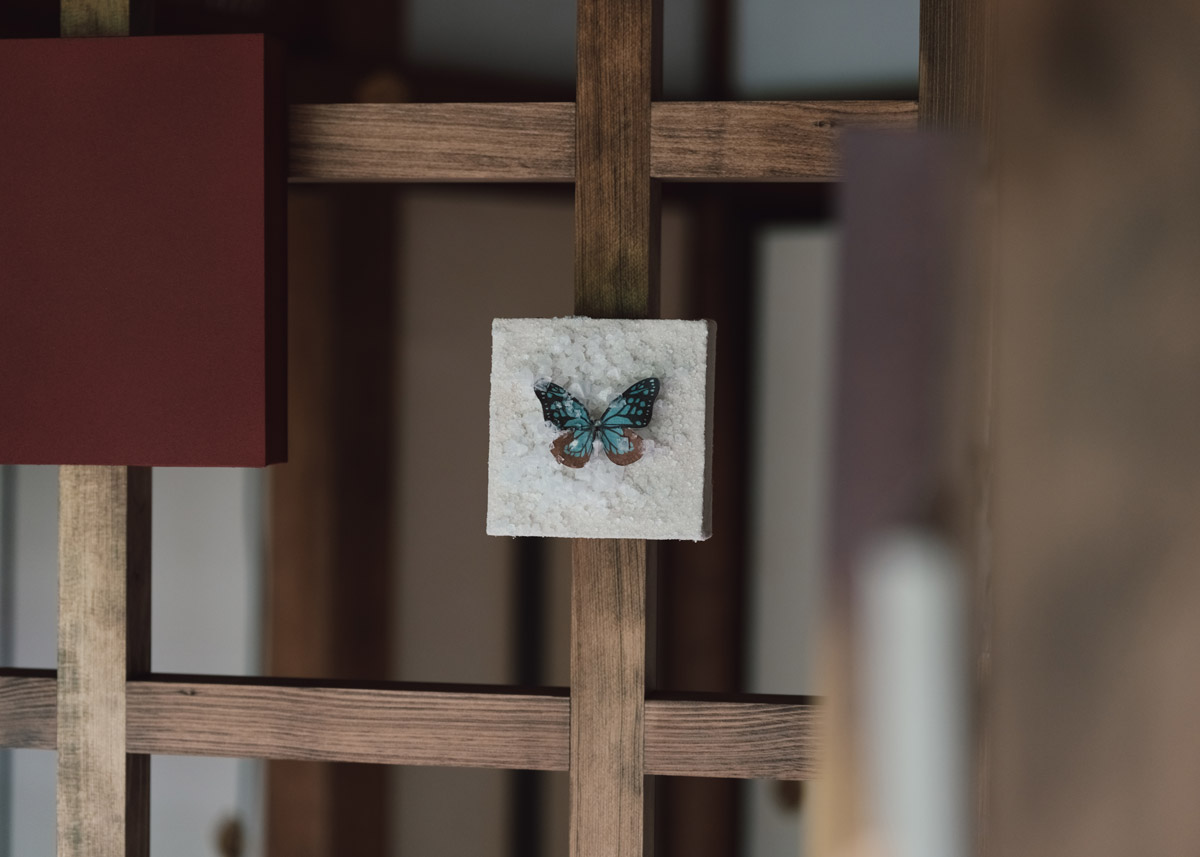
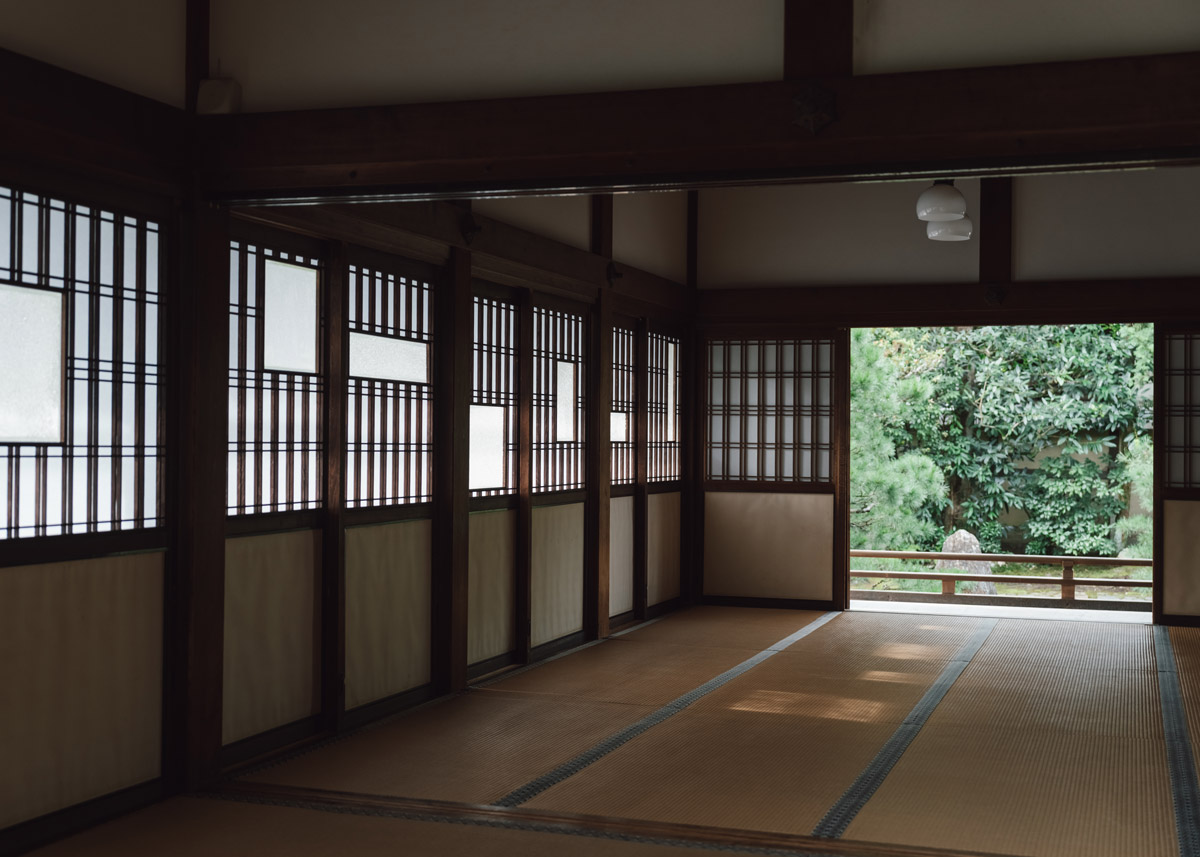
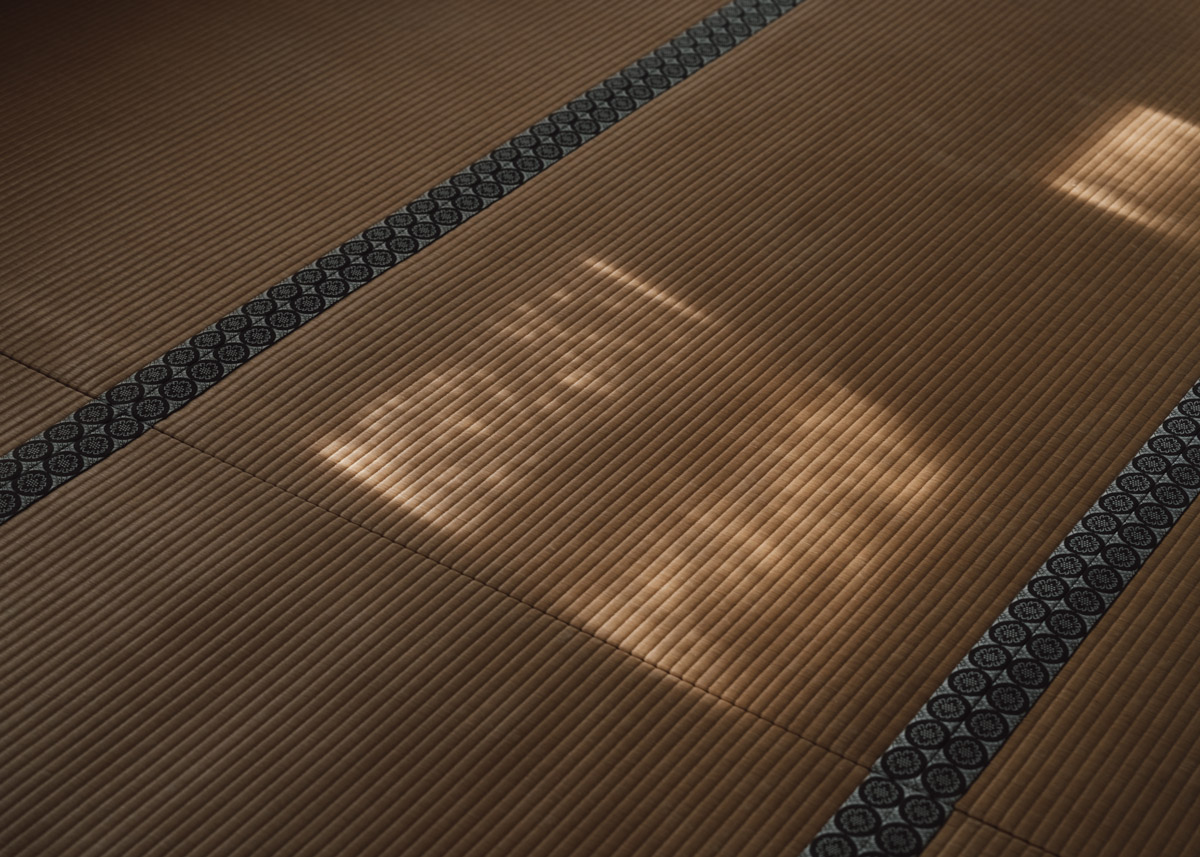
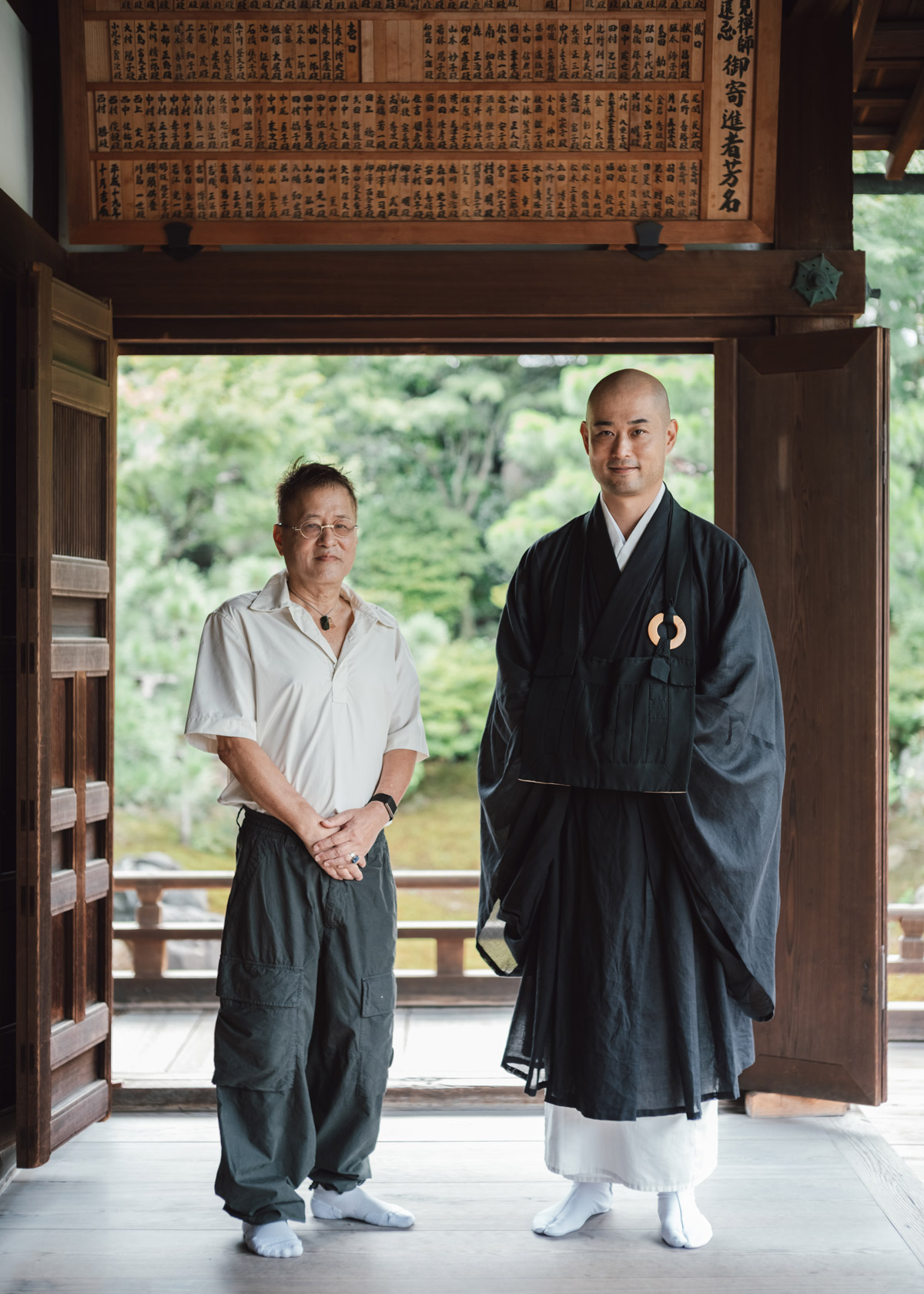
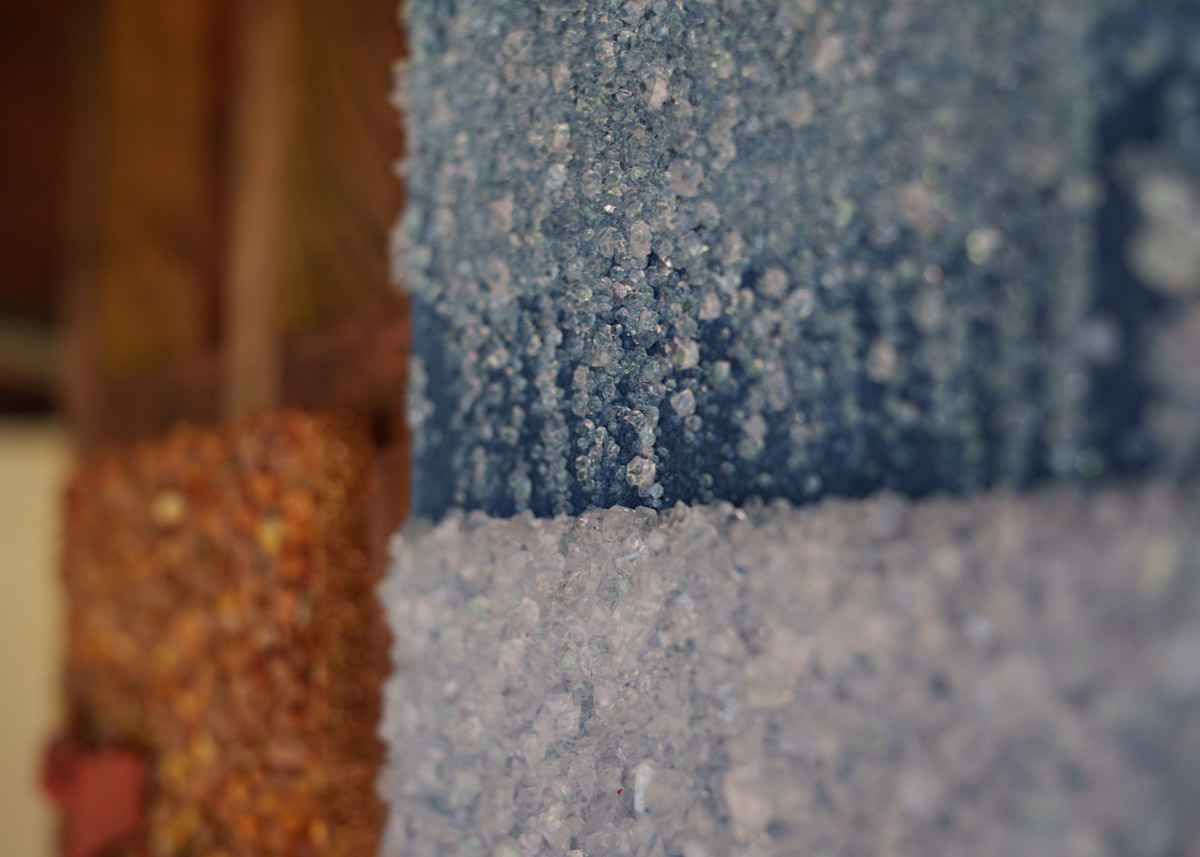
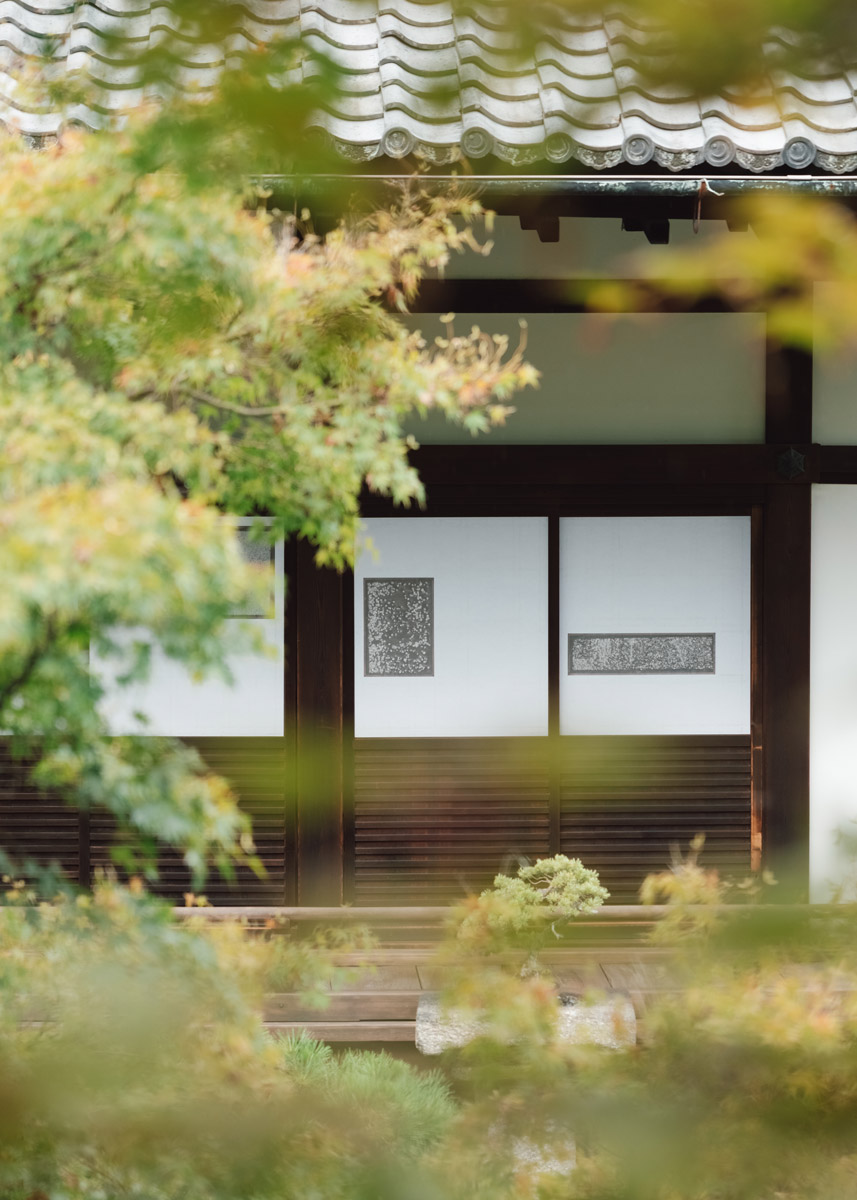
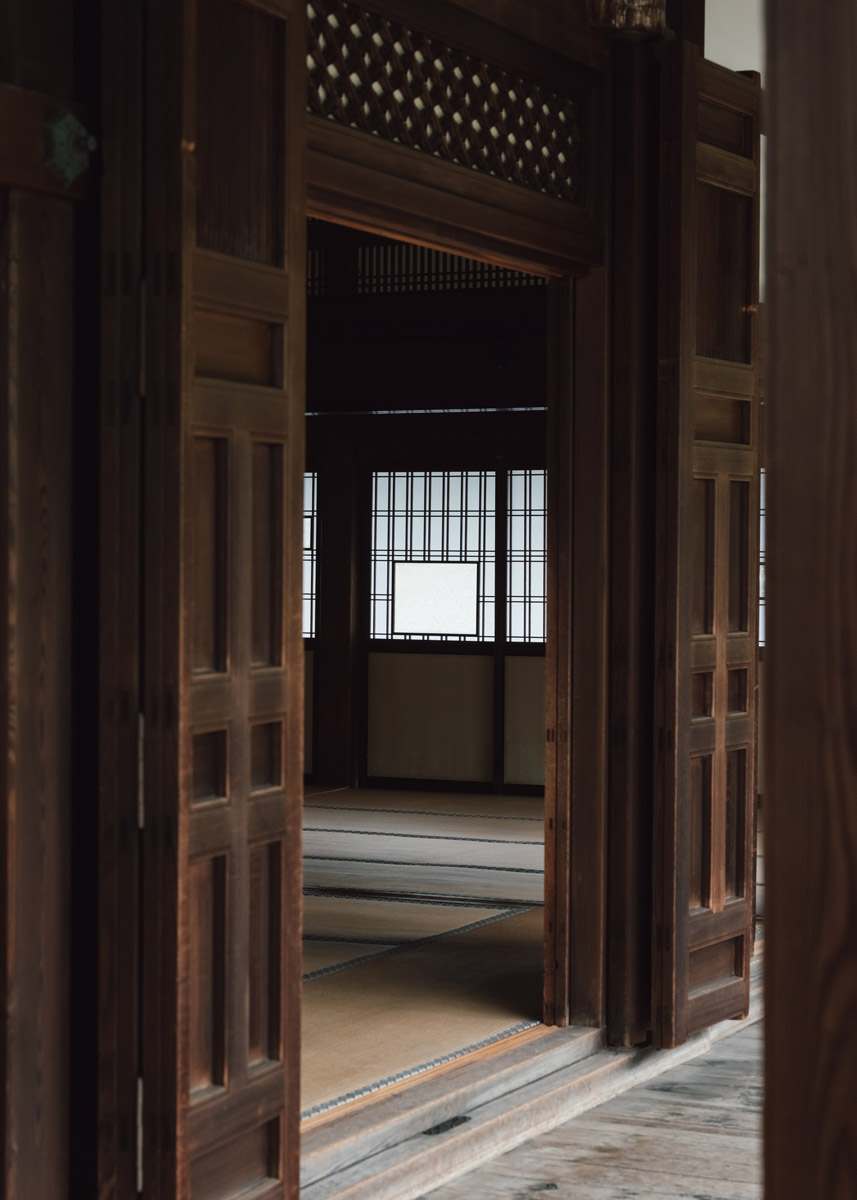
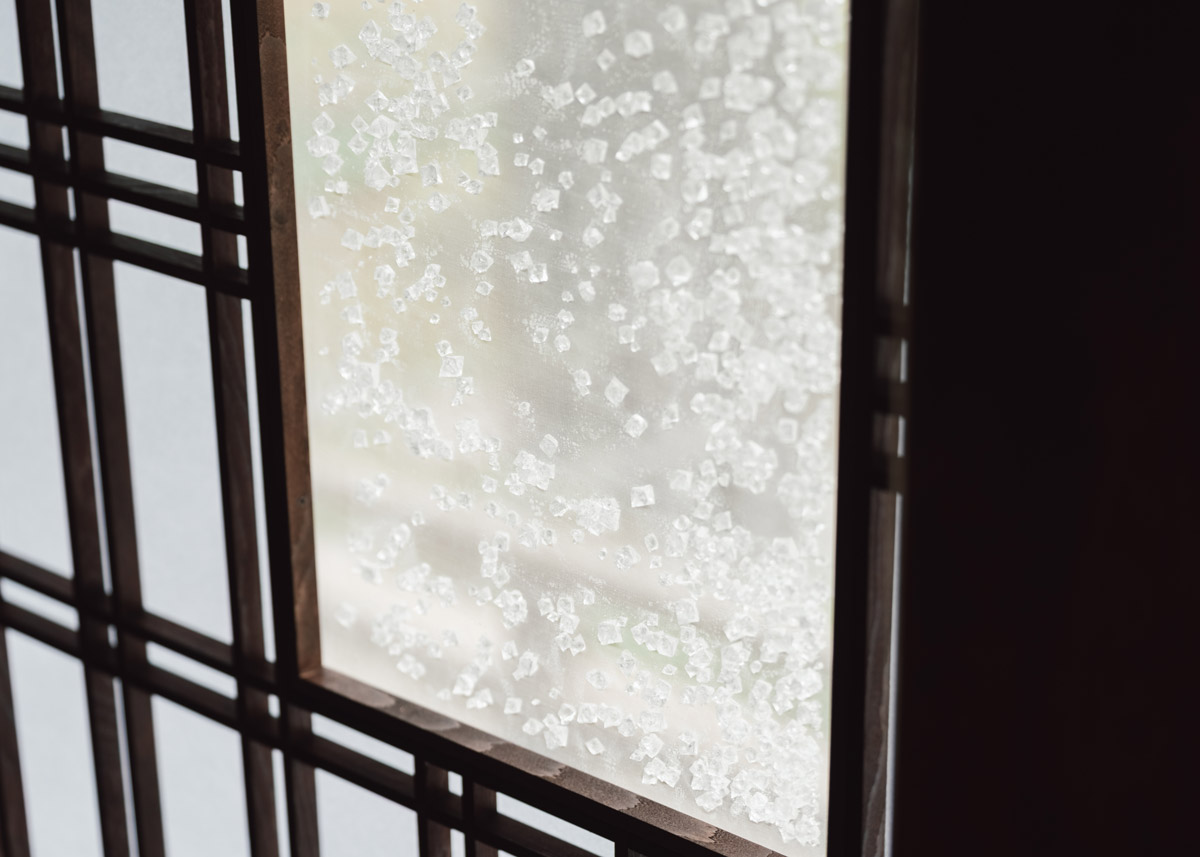
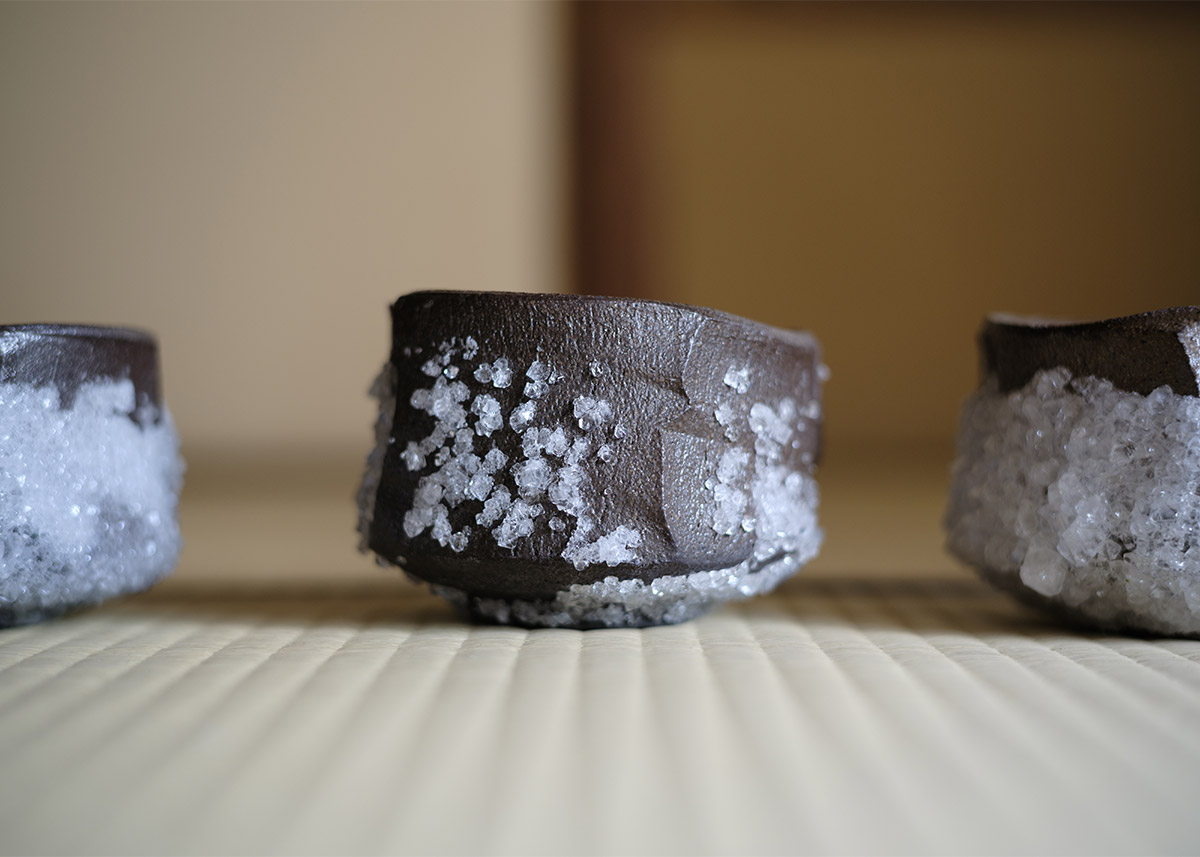
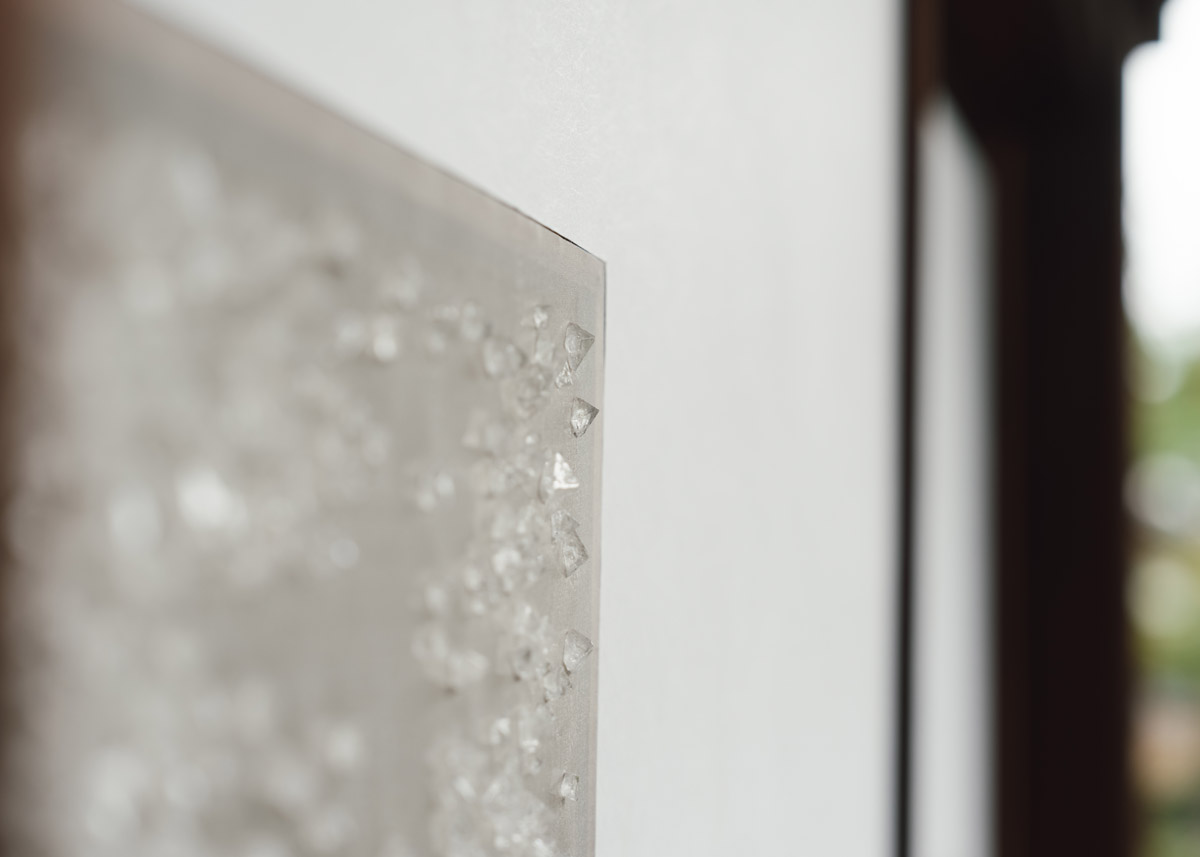
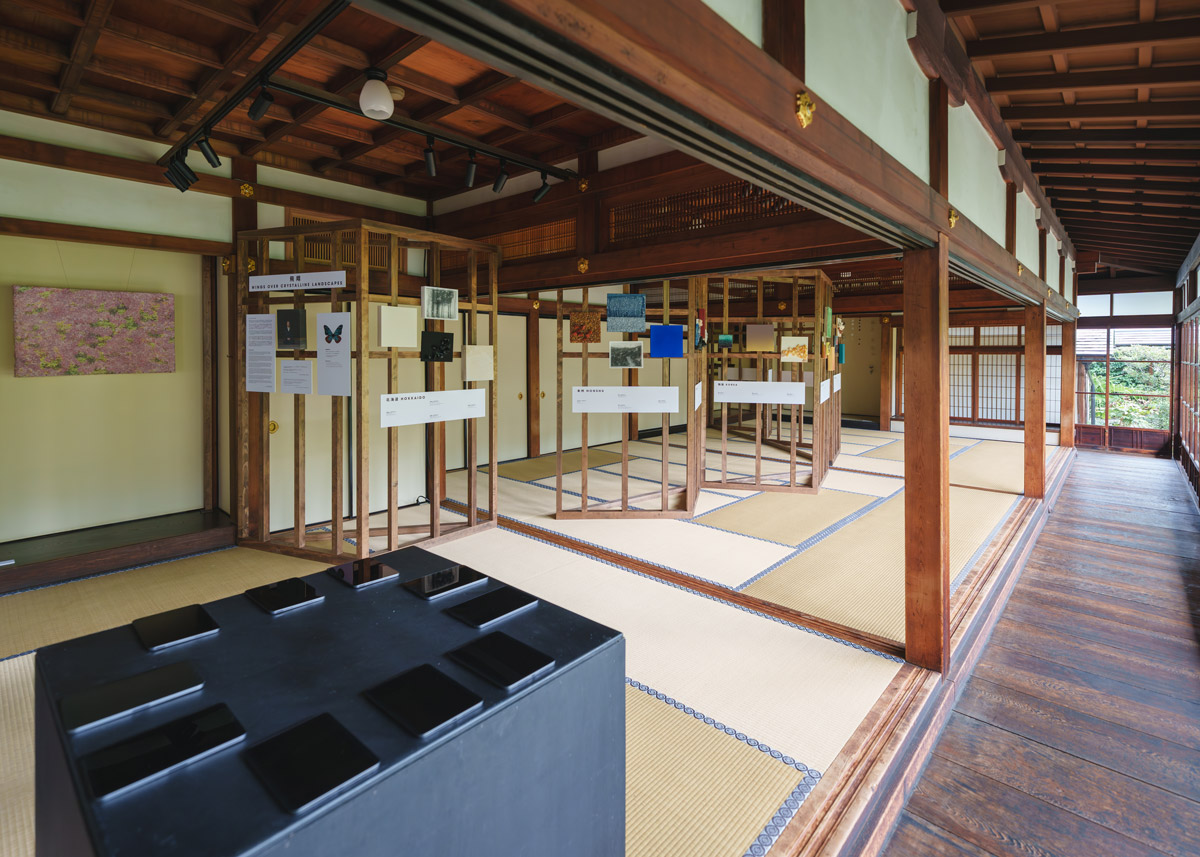
All images courtesy of the artist. Photos by Mitsuru Wakabayashi.

